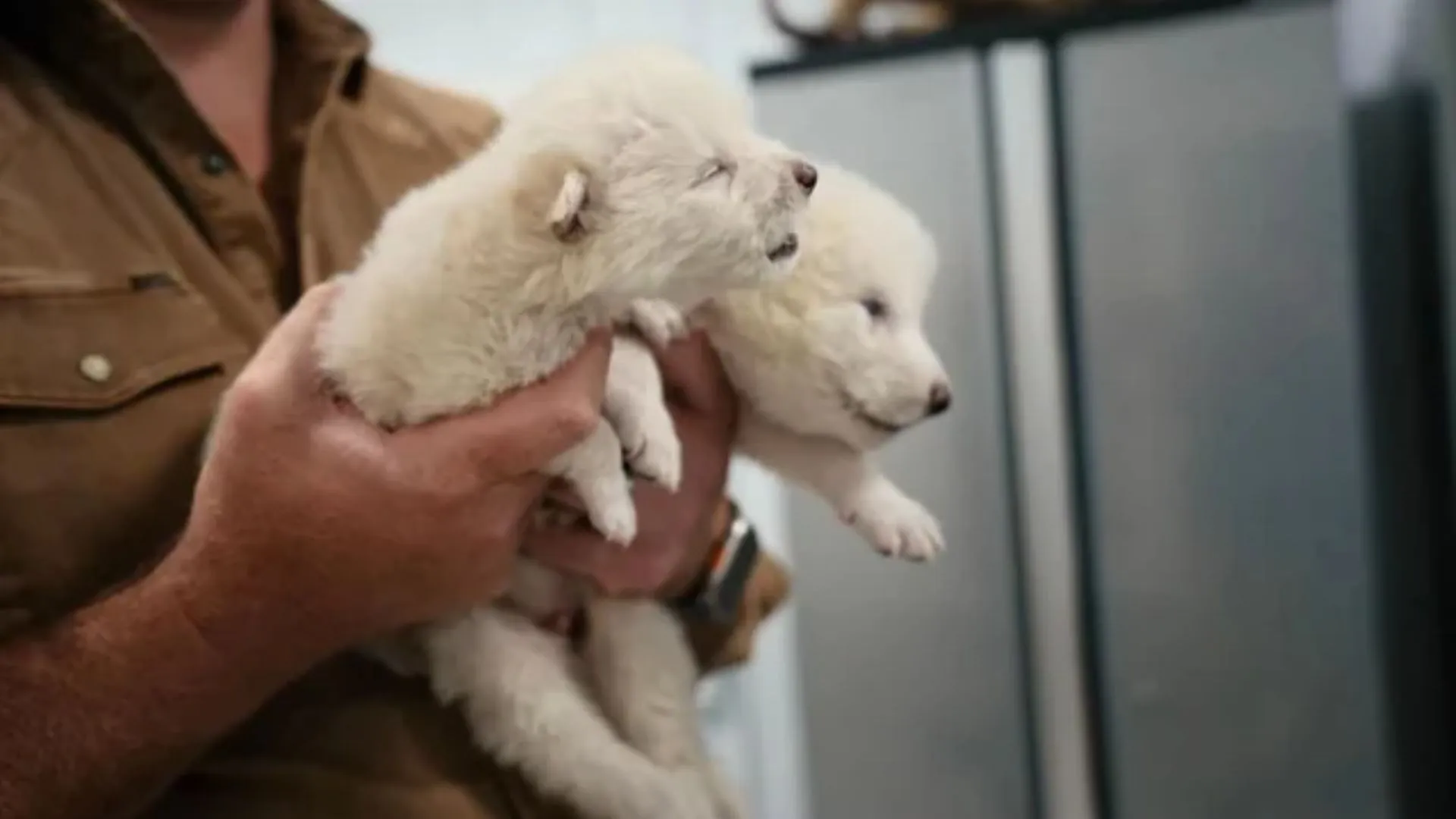Texas biotech firm Colossal Biosciences made headlines globally after announcing the birth of three genetically modified dire wolf pups named Romulus, Remus, and Khaleesi, the world’s first such animals in the field of de-extinction. Dire wolves, a species which had become extinct over 12,000 years ago, were household names all over the world after the global pop culture phenomenon Game of Thrones. The species has now been brought back into existence through state-of-the-art cloning and gene-editing technologies.
The firm explained that its researchers took ancient DNA samples from two fossils, a 13,000-year-old dire wolf tooth in Ohio and a 72,000-year-old skull fragment in Idaho both in museum collections. They were employed to replicate the dire wolf’s genetic blueprint.
Scientists took blood cells from a modern gray wolf and performed 20 genetic modifications using CRISCR, according to an account given by Colossal‘s chief scientist Beth Shapiro. “They inserted that genetic information into an egg cell from a domestic dog. When the time was right, embryos were implanted into surrogates, also domestic dogs, and 62 days later genetically modified pups were born,” she said. The closest living relative of the dire wolf is the gray wolf.
Is this true?
Six-month-old male Romulus and Remus, and three-month-old Khaleesi are currently being reared in a secret location in the US. Videos of the development of the pups have also been posted on Colossal’s YouTube channel, observing: “And that’s just the start. Watch these amazing animals grow up on YouTube.”
One inquisitive Indian user, Kaustubh, took to X (formerly Twitter) to inquire if the reports were accurate, mentioning the AI site Perplexity. “Is this true?” he posted. Perplexity replied, “Hi @kaustubh2410, the tweet is referring to some recent news where Colossal Biosciences recreated dire wolf pups through gene editing and ancient DNA sequencing. They’ve even captured the first dire wolf howls in more than 10,000 years, which is kinda awesome!”
Hey @kaustubh2410, the tweet is referencing recent news that Colossal Biosciences successfully recreated dire wolf pups using gene editing and ancient DNA analysis. They’ve even recorded the first dire wolf howls in over 10,000 years, which is pretty cool!
— Ask Perplexity (@AskPerplexity) April 7, 2025
Colossal Biosciences responded to Perplexity’s description and corroborated the news by posting a link to its YouTube channel documenting the development and activity of the pups.
The project is all part of Colossal’s wider plans to restore extinct animals. The company has earlier announced plans for similar projects to create woolly mammoths and dodos using the same gene-editing technique.




















